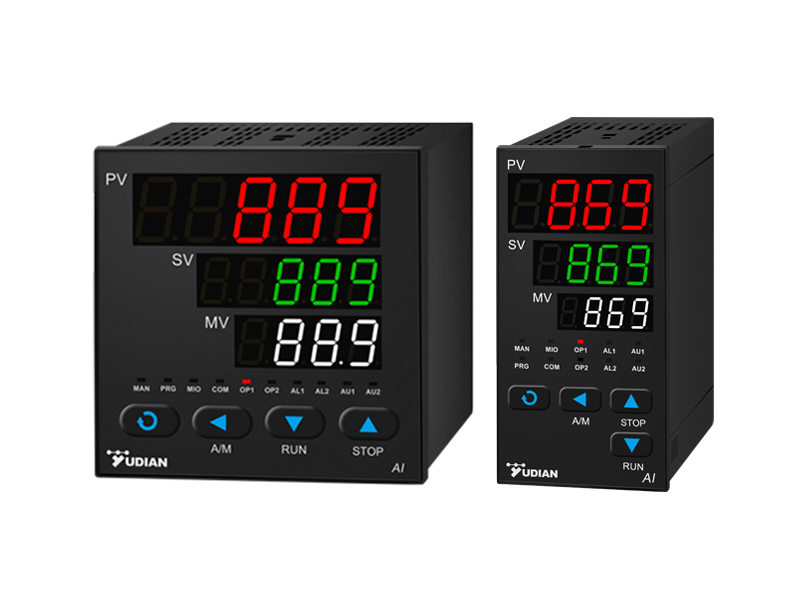 Home>Products>Panel-Mounted Temperature Controllers>AI-8X9 Series Cascade High-Performance Temperature Controllers
Home>Products>Panel-Mounted Temperature Controllers>AI-8X9 Series Cascade High-Performance Temperature Controllers
AI-8X9 Series Cascade High-Performance Temperature Controllers
AI-889 Series: 0.1 class measurement accuracy
AI-869 Series: 0.15 class measurement accuracy
Dual-input, high-performance instrument with cascade control functionality
Suitable for applications with significant time delays or frequent disturbances where overshoot suppression and precise control are required
1. This series represents high-performance instruments featuring dual inputs and cascade control functionality.
2. The AI-889 series offers 0.1-class measurement accuracy, while the AI-869 series provides 0.15-class accuracy.
3. Compared to the AI-888, the AI-889 is equipped with dual-channel hardware inputs (the primary and secondary input specifications can be defined independently but must use the same type of sensor, either both thermocouples or both RTDs). It removes the 5V external setpoint and valve feedback signal input circuitry. Dual-channel inputs can be used separately as primary and secondary control inputs to form an internal cascade control channel, enabling complex cascade regulation. This is ideal for situations with significant lag or frequent disturbances, where overshoot suppression and precise control are required.
4. It can automatically analyze the temperature difference between the primary and secondary controls and adjust the cascade control algorithm, making the traditionally complex cascade tuning process as easy as ordinary single-channel PID control.
5. If cascade control is not used, the dual-channel inputs can serve as dual thermocouple backups, automatically switching to the backup thermocouple when the primary thermocouple circuit is open; alternatively, it can select the higher or lower value of the dual inputs as the primary control input, enabling two different types of input signals to alternate as the main control input; it can also forcibly select the secondary input as the control input.

TOP







